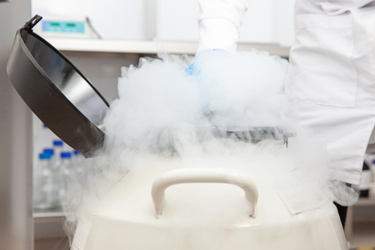Critical Considerations For Improved Cryopreservation Of Cell Therapies

Cell therapies promise to revolutionize medicine. Delivering these therapies involves complex manufacturing processes that produce potent living medicine with short shelf lives. Efficient cryopreservation is vital for translating these exciting therapies into consistent, potent, and accessible medicines.
Cryopreservation of living cells and tissues poses many challenges. The ideal cryopreservation process delivers highly viable and potent living therapies in a minimally toxic formulation that can be directly administered to the patient. Cell and tissue types will respond differently to various cryoprotective agents and formulations thus necessitating in depth testing and optimization of cryopreservation formulation. Administration sites will have different toxicity tolerances and sensitivities. Often the most common cryoprotective agents can cause toxicities. Cryopreservation development is a complex, multidisciplinary effort requiring cell biology, physiology, toxicology, process engineering, and biomanufacturing expertise.
Explore critical considerations for optimizing cryopreservation that will help you to deliver program goals faster. Brent Chamberlain, Associate Director of Cell and Gene Therapies, Jefferson Institute for Bioprocessing, reviews a framework for selecting and developing cryopreservation formulation, considerations for developing cryopreservation operations, and how cell type and route of administration impacts requirements for the formulation and cryopreservation processes.
Get unlimited access to:
Enter your credentials below to log in. Not yet a member of Cell & Gene? Subscribe today.
